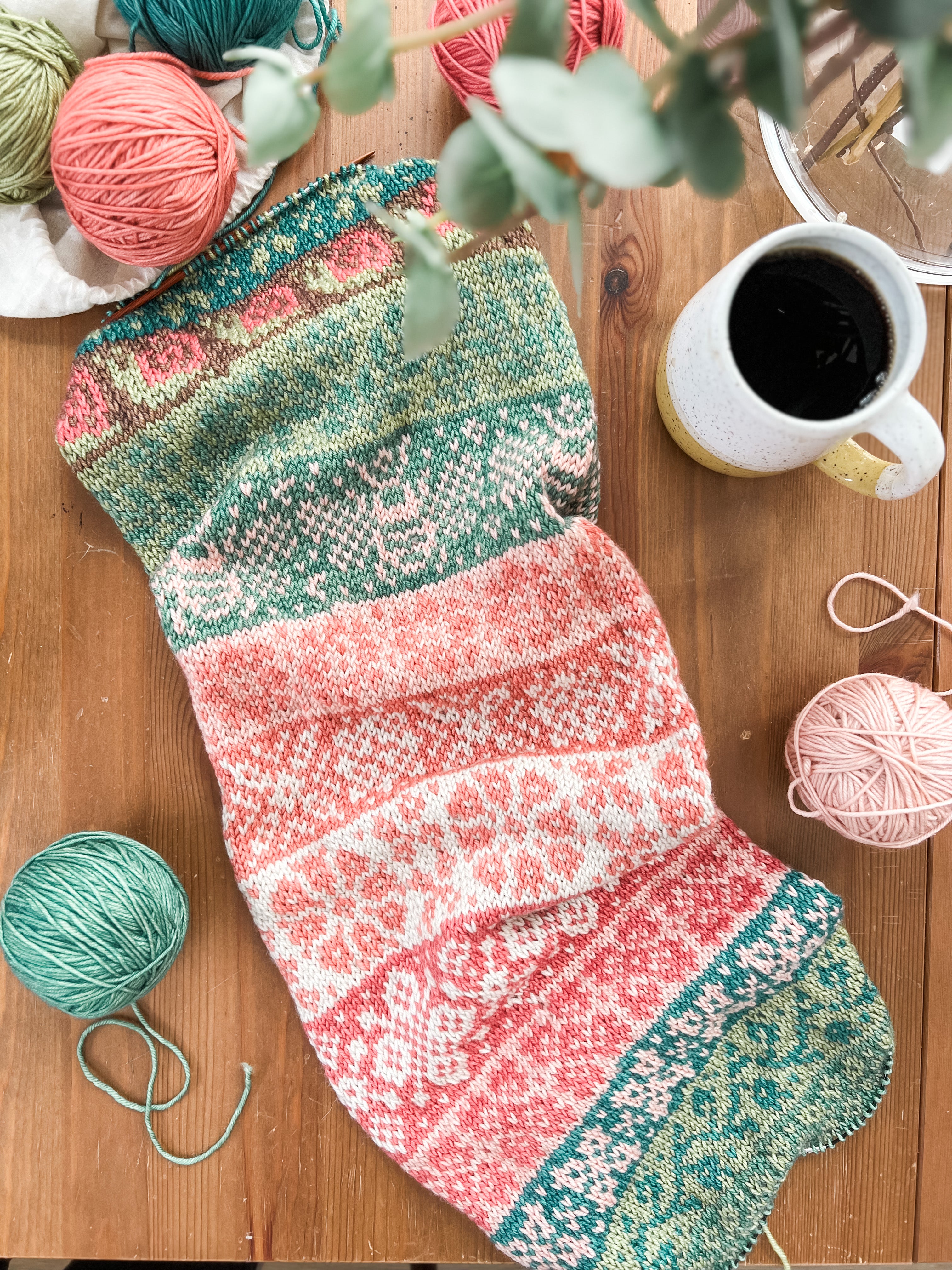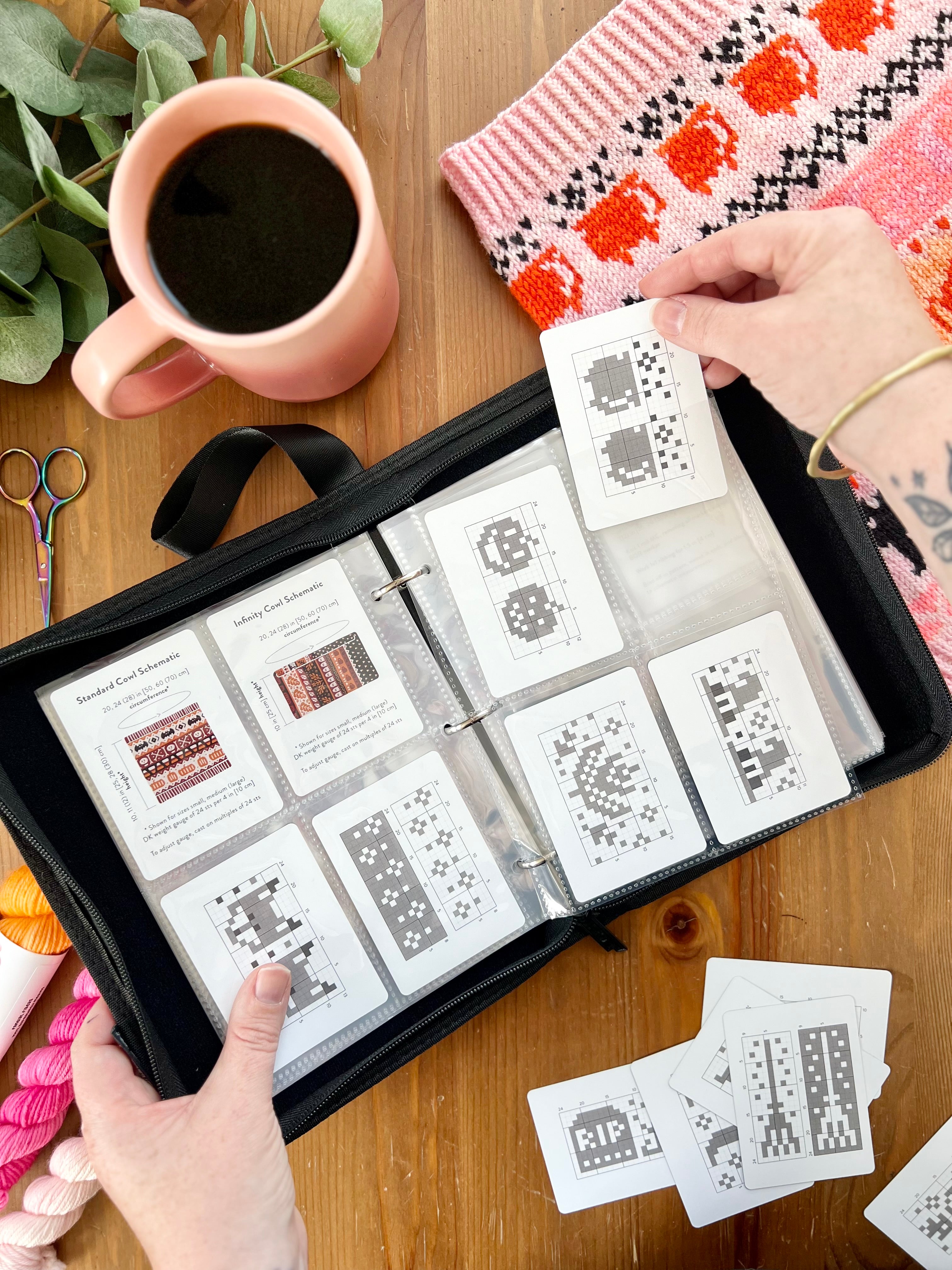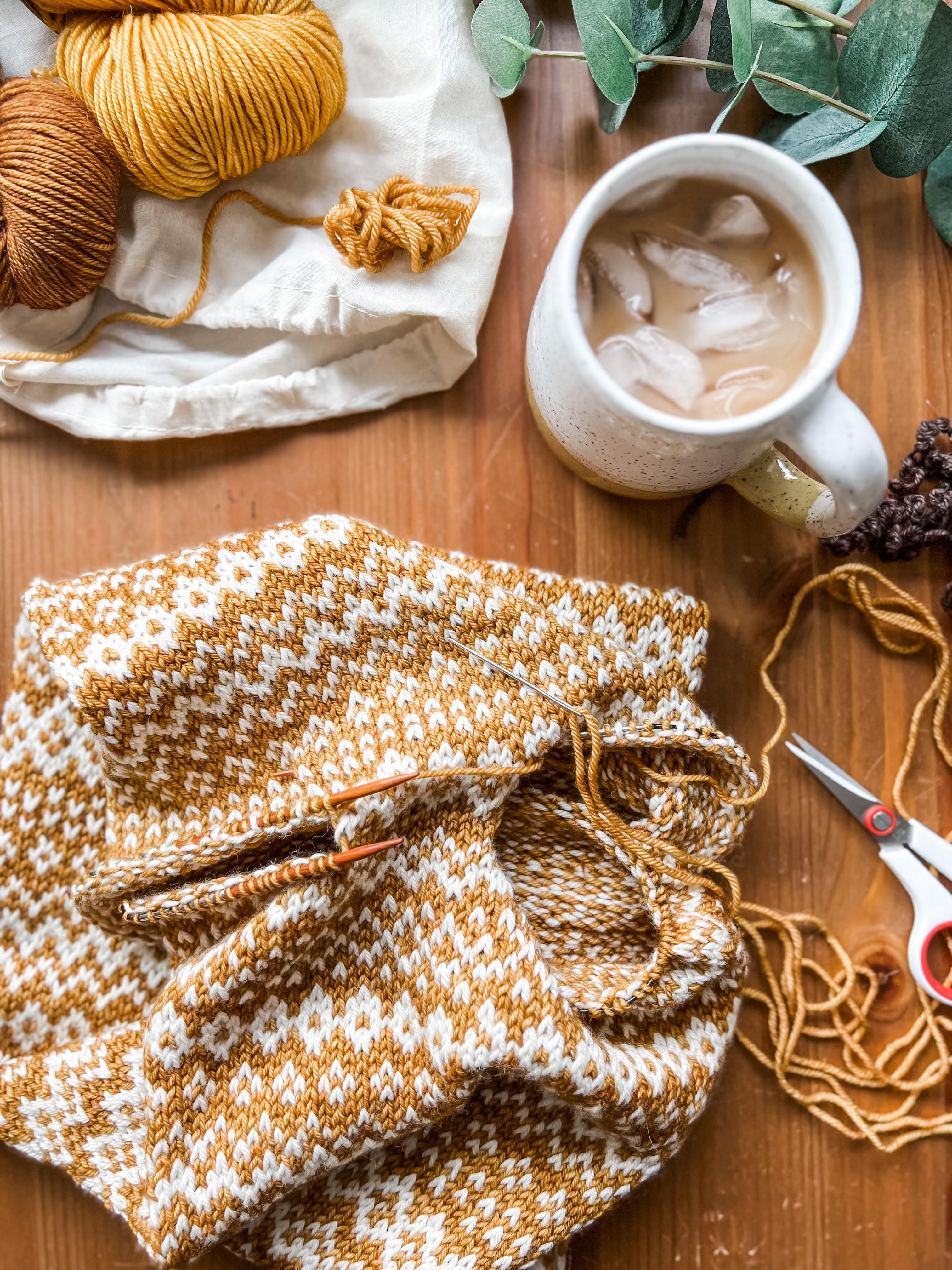Creating an event that is genuinely accessible goes beyond ensuring that customers with mobility aids can enter a space (although this is obviously important). In the aftermath of Wool & Folk 2023, a long overdue conversation has started about how inaccessible this event was and how we, as a community, can do better going forward.
My sister, Jamie Lomax, owner and designer of Pacific Knit Co. was one of the vendors at the event above. She said, "From the moment we arrived for set up, everything was unorganized and unclear. But as the event unfolded, I found that the most unacceptable aspect was the shear lack of accommodations and accessibility for those who needed it - shoppers and vendors alike. It simply wasn't an accessible event for a fiber community that should be much more inclusive."
So let's get started. List your accessibility considerations and accommodation options on the event page. Clearly, where it’s easy to find. If you are not making it explicit and obvious on your event page the specific efforts you have taken to make an event accessible – then it is not accessible, regardless of what actually happens in real time at the event.
Most (all?) disabled people have had bad experiences of being ignored, forgotten, lied to, gaslit, invalidated or dismissed in regards to their reasonable expectations of accessibility and accommodations. If you are not telling me before I buy my ticket that this space is accessible (in detail) then I will assume it is not, and I will probably not buy a ticket. Plain and simple. A lot of people are excluded from events at this stage because they’ve had to learn to be cynical.
If you are not including these people, then your event is not accessible.
Here is a list of accessible accommodations:
NOTE: These are all in addition to the legal requirements of Americans with Disabilities Act (ADA), Building Occupancy, Fire Code, etc. requirements that must also be met.
-
Masked Hours
-
As we are still very much in a time of covid, organizers should set aside times during the event where masks are required so that those who wear masks (by preference or necessity) can attend safely.
-
-
Quiet Hours
-
Set aside a time, preferably at the start of the day or combined with masked hours, where the event is low-sensory. This means smaller crowds, lower lighting, and lower volume (quieter voices, no background music, etc.)
-
This should also include instructing vendors to allow customers browse with less interaction with staff. Staff keep their physical distance and don’t initiate small talk until the customer asks a question.
-
-
Quiet Areas
-
Designate an area where people who are overstimulated during the event can go to get away from noise and crowds.
-
This space needs to be separate from any dining/eating/crafting areas – the sound of people eating or knitting needles clicking is not appropriate in a designated quiet area.
-
-
Chairs and Rest Areas
-
There needs to be places for people to sit down throughout the day. These should not all be located in the same part of the venue, but spaced out so that folks who need to get off their feet aren’t struggling to find a chair, or hike across a hall to get to the nearest one, or even have to consult a map to find one.
-
Additionally, all chairs need to be usable by folks in all body sizes. This means wider chairs, higher weight capacity, no arms, chairs that aren’t attached to tables/to the chairs next to them.
-
-
Gender Neutral Bathrooms
-
People of all genders attend these events, and they all deserve to have the basic human right of using an appropriate bathroom safely.
-
-
Staff Pronoun Pins
-
Being misgendered is incredibly triggering (and unsafe) for many transgender folks. Having staff wear pronoun pins does NOT fully mitigate this risk, but it a way to signal that this is a safe(ish) space and that pronouns will be respected here.
-
See note below about Vendor Accessibility Pledge.
-
-
Nursing Rooms
-
Folks who are breastfeeding and/or pumping/expressing need to have a safe and private place to do this. These folks should not be excluded from the event.
-
-
Clear Maps
-
A good, clear, helpful map needs to include more than just a list of where different vendors are. It should include the width of hallways/walkways, booth sizes, location of bathrooms (labelled), rest/quiet areas, check-in, information, assistance, etc.
-
If there are multiple bathroom locations – I need to know, explicitly, which locations are accessible/gender-neutral (and if they all are, then this needs to be clearly labelled as well. I should not have to guess whether the toilet I just spent 10 minutes walking to will be safe for me to use.)
-
-
Clear Expectations on the Event Page
-
A lot of disabled folks need to plan ahead for attending large events, and this is especially true of people who get overstimulated by the unpredictability itself.
-
Provide as much information as possible on: What sensory experience am I committing to by attending this event? What can I expect in terms of lighting, temperature, crowd size, ambient music, smells, etc?
-
Where able, it is also helpful to include good, clear photos of the venue. If this event has happened before – show me photos of the event when it’s full of people so I can get an idea of what it will feel like to be standing in that space, so I can plan what self-protection/cope-ahead strategies I need in order to attend safely.
-
-
Lockers or Coat Check
-
Not everyone will be able or willing to carry their purchases or even some of their belongings around all day. A safe place to leave heavy coats or purchases would help a lot of people be able to enjoy the event for longer.
-
-
Clear Identification of Staff
-
Make it obvious who is working at the event, and in what capacity. Are they a vendor, a volunteer, do they have information and can point me in the right direction.
-
-
Offer Additional Assistance/aids at Event Check-in
-
Consider offering some small, but helpful, items to staff and customers when they arrive.
-
This could include things such as: foam ear plugs, pronoun badges for customers, “quiet browsing bags”, “invisible disability” lanyards*, large font maps, etc.
-
What is a Vendor Accessibility Pledge?
For any of this to be successfully implemented, the vendors and other staff need to commit to ensuring accessibility, and they need to be explicitly made aware of what that means. One of the reasons why these things aren’t done at many events is because people without lived experience simply aren’t aware. Education and awareness is part of the event coordinator’s role in making the event accessible.
Vendors need to agree to ask/respect pronouns, abide by ‘low sensory’ requests, etc. otherwise many of the items above won’t actually be implemented.
Additional Points:
-
All accommodations need to be available to vendors, staff, and volunteers. Disabled vendors exist, and they are excluded from inaccessible or poorly-planned events.
-
None of these things should be financially inaccessible. Quiet hour browsing can’t be a $100 ticket, and coat check can’t be $20. You can’t have seats but only for people who have paid for food.
-
Accept that while you won’t be able to anticipate everything for all people, you can always ask. Have an option when someone is purchasing their ticket/vendor stall where you ask if they have any other needs/requests that have not been addressed.
THIS IS NOT AN EXHAUSTIVE LIST. This is a starting point, NOT a finish line.
If you have any other suggestions, please leave them in the comments here or contact Jamie Lomax directly. She would like to make this a permanent resource on this website and the community’s lived experience is essential to making sure future events are more inclusive.
Thank you,
Grey Lundy
---------
*Note on the term “invisible disability”: I use this term here because people are generally familiar with it, but I don’t personally love this term. Assuming my disability is “invisible” comes from a place of assuming that all people are able-bodied/neurotypical until proven otherwise, which is a sentiment that perpetuates ableism. While I sometimes have to mask due to societal pressures or expectations, my disability isn’t hidden or invisible – people simply choose not to see it. Accessibility should be in-built, and the burden being included shouldn’t be on the disabled person.




